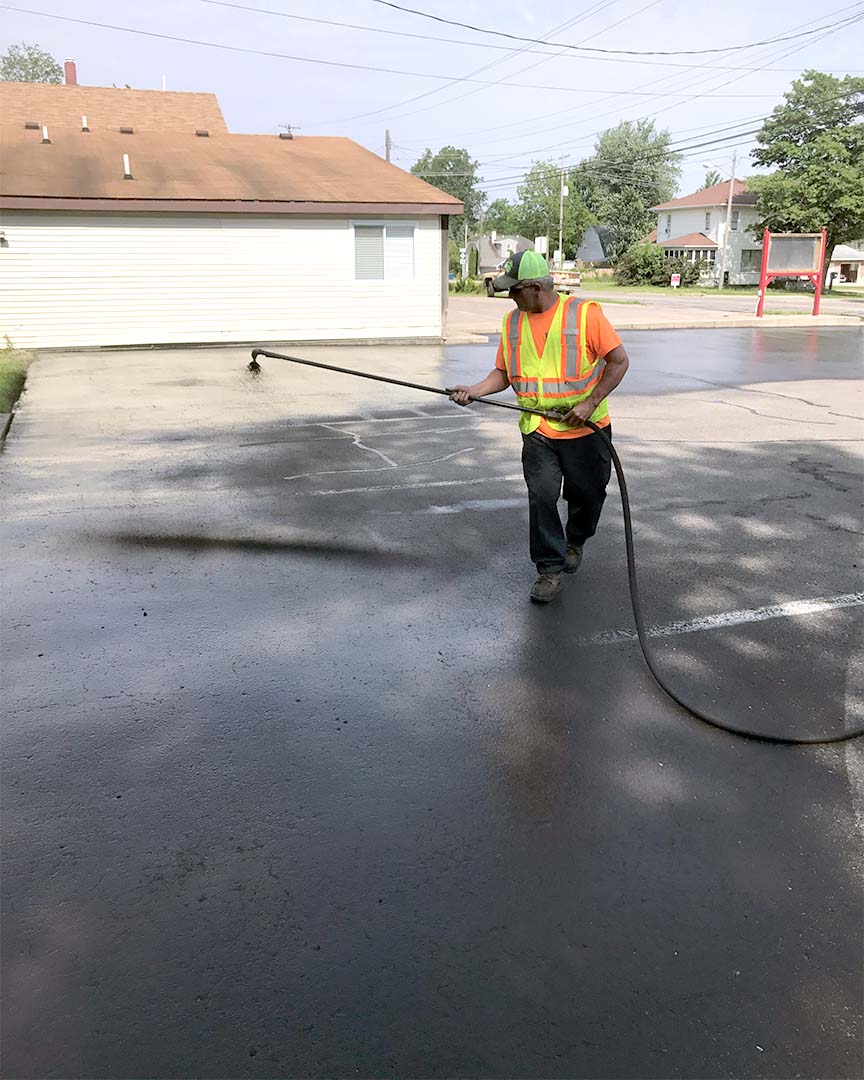Unleash the Possible: Regrading and Asphalt Sealing for Industrial Spaces
Warm Mix Asphalt: A Sustainable Service for Pavement
Warm Mix Asphalt (HMA) has actually arised as a leading sustainable option for pavement options, using a myriad of cutting-edge innovations and ecological benefits. Its ability to reduce and recycle products energy consumption presents a compelling instance for its adoption in road construction projects. The long-lasting efficiency and resilience of HMA make it a favored alternative for framework growth. As the need for environment-friendly building methods expands, exploring the subtleties of HMA's sustainability can give useful understandings into the future of sidewalk solutions.
Environmental Advantages of Warm Mix Asphalt

Moreover, Warm Mix Asphalt aids to mitigate urban heat island impacts. Its dark color takes in sunlight, decreasing the amount of warmth mirrored back into the environment compared to lighter-colored pavements. This can decrease ambient temperatures in urban locations, lowering the need for cooling and ultimately lowering power consumption.
Furthermore, Hot Mix Asphalt adds to improved stormwater management. Its porous nature allows water to penetrate the pavement and reenergize groundwater products, lowering overflow and the danger of flooding. These ecological benefits make Hot Mix Asphalt a sustainable selection for leading roadways and highways.
Power Effectiveness in HMA Production
Is energy performance a critical element in the production of Hot Mix Asphalt (HMA)? Absolutely. Power plays a considerable duty in the manufacturing of HMA, impacting both cost and ecological sustainability. One key element of energy performance in HMA manufacturing is using cozy mix asphalt (WMA) technologies (hot mix asphalt). WMA enables for the mixing and placement of asphalt at reduced temperature levels contrasted to typical warm mix asphalt, causing decreased energy usage throughout manufacturing. This procedure not just lowers gas usage but likewise lowers greenhouse gas discharges, making it a more eco-friendly alternative.
Furthermore, improvements in plant technologies have actually led to even more energy-efficient HMA production procedures. Modern plants are developed with attributes like recycled asphalt sidewalk (RAP) processing capabilities, effective heater systems, and improved insulation, all contributing to power savings. By maximizing energy use in HMA production, the industry can lower its carbon impact while keeping top quality pavement products. Power efficiency is, as a result, a crucial consideration in guaranteeing the sustainability of Warm Mix Asphalt manufacturing.
Recyclability of Warm Mix Asphalt
The recyclability of Warm Mix Asphalt (HMA) is an essential element of its sustainability and page long-term environmental effect. HMA is among one of the most recycled products in the United States, with over 100 million lots of recovered asphalt pavement (RAP) being reused annually in new sidewalk building and construction. Recycling HMA uses several ecological advantages, such as lowering the demand for virgin products, reducing power consumption during manufacturing, and lowering the quantity of waste sent to garbage dumps.
The process of reusing HMA involves crushing the existing pavement, squashing it into smaller items, and blending it with new accumulation and asphalt binder to create a recycled mix. Generally, the recyclability of HMA plays a considerable role in advertising lasting practices within the pavement market.

Long-Term Efficiency of HMA
Asphalt sidewalks demonstrate sturdiness and resilience over an extensive period, mirroring the long-term performance of Warm Mix Asphalt (HMA) The durability of HMA can be credited to its ability to endure rush hour lots, rough weather condition problems, and the effects of aging. Research studies have actually shown that properly designed and properly built HMA sidewalks can last for 20 years or more with regular upkeep. The key to optimizing about his the long-term efficiency of HMA hinges on using high-quality products, adhering to best methods in construction, and carrying out effective upkeep methods. Proper drain, routine inspections, and prompt repair services are essential for protecting the structural stability of HMA sidewalks over time. Furthermore, innovations in HMA technology, such as using polymer-modified binders and cozy mix asphalt, have actually further enhanced the longevity and long life of HMA sidewalks. By prioritizing high quality building and maintenance techniques, HMA remains to confirm itself as a affordable and sustainable service for long-lasting pavement framework.

HMA: Durability and Sustainability
Showing both resilience and sustainability, Warm Mix Asphalt (HMA) has actually come to be a keystone in the construction of durable sidewalk frameworks - angled parking. HMA's toughness originates from its ability to withstand heavy tons, extreme weather condition conditions, and high website traffic volumes, making it a trusted option for roadways, highways, and airport terminal runways. The make-up of HMA, which generally includes aggregates, binder, and filler, plays a vital role in enhancing its durability and resistance to deterioration
Moreover, HMA's sustainability depends on its recyclability and energy-efficient production procedure. The ability to reuse recovered asphalt sidewalk (RAP) in brand-new HMA combinations decreases the need for virgin materials and decreases the ecological effect of sidewalk building and construction and maintenance. In addition, the energy performance of producing HMA depends on its reduced mixing temperatures compared to various other sidewalk products, resulting in decreased power usage and greenhouse gas emissions.
Verdict
Finally, warm mix asphalt (HMA) supplies a lasting solution for sidewalk with its eco friendly features. HMA's recyclability, power effectiveness in production, and long-lasting sturdiness make it an eco-friendly selection for roadway building and construction. By conserving natural deposits, minimizing waste, and reducing greenhouse gas exhausts, HMA plays a crucial role in advertising sustainability in framework development. Its ability to minimize city warm island impacts even more highlights its relevance in creating ecologically conscious and resilient pavement systems.
HMA is one of the most recycled products in the United States, with over 100 million lots of recovered asphalt sidewalk (RAP) being recycled yearly in brand-new sidewalk building and construction.The procedure of reusing HMA includes grating the see here existing pavement, crushing it right into smaller pieces, and blending it with brand-new accumulation and asphalt binder to create a recycled mix.Asphalt sidewalks show toughness and resilience over an extensive duration, reflecting the long-term efficiency of Hot Mix Asphalt (HMA) In addition, improvements in HMA technology, such as the use of polymer-modified binders and cozy mix asphalt, have actually better enhanced the toughness and longevity of HMA pavements. The capability to recycle redeemed asphalt sidewalk (RAP) in brand-new HMA mixes minimizes the demand for virgin products and minimizes the environmental effect of sidewalk building and construction and maintenance.